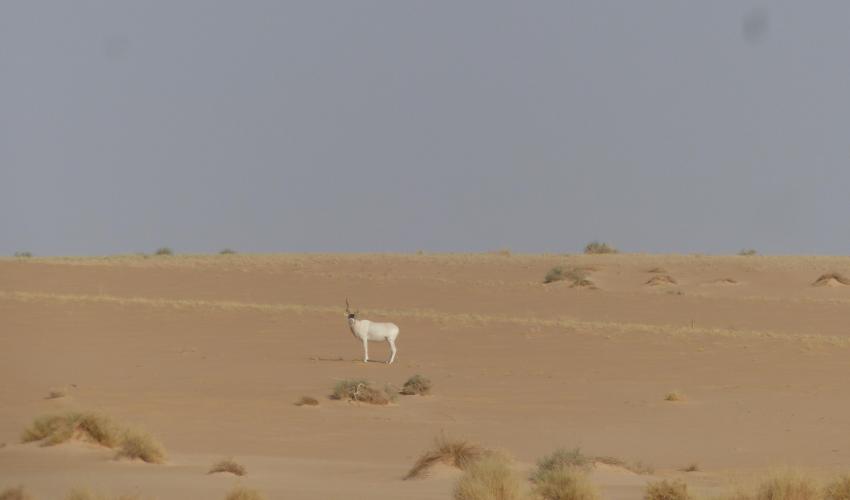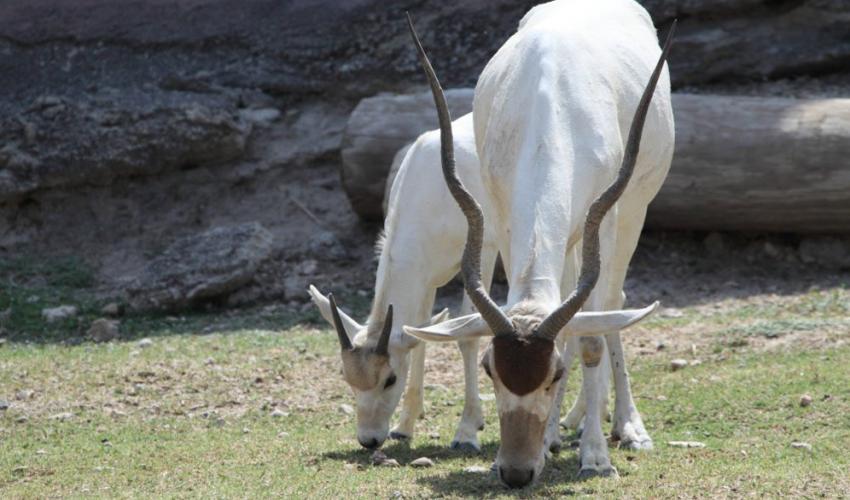The Critically Endangered addax (Addax nasomaculatus) is a true desert-adapted antelope – the only one of its genus (species group) – with all the evolutionary potential that implies for adapting to climate change in our changing world. Once found in large numbers across vast tracts of the Sahara, illegal over-exploitation and persecution led to a rapid decline in numbers over the past half-century. Since 2007, when there were estimated to be only 200-300 animals remaining, there has been a sharp fall in direct observations, tracks and local reports. This recent drop coincides with the start of oil exploration and production and an increase in numbers of people transiting through addax habitat. With these pressures exacerbated by regional security concerns, there are thought to be fewer than 100 animals – and perhaps less than half that figure - surviving in the wild today. There is also a large global captive population of addax, which has become a source for reintroduction in Morocco and Chad since 2019.
The addax zone in the Tin Toumma desert now lies outside the protected area.
By the early 2000s, the only remaining, viable addax population was found in the Tin Toumma desert of eastern Niger, which in 2012 was incorporated into the Termit and Tin Toumma National Nature Reserve (TTNNR), with some of these addax crossing the border into Chad. However, in June 2019, the Niger Government reclassified the boundaries of TTNNR, resulting in about 50,000 square kilometres in the eastern part of the reserve being excluded from the reserve to remove overlap with oil concession blocks. To replace the declassified area, the Government extended the reserve to the west. As an unintended consequence, the addax habitat in the Tin Toumma desert now lies outside the protected area, along with much of the Termit Massif and its population of another Critically Endangered antelope, the dama gazelle (Nanger dama).











Añadir nuevo comentario